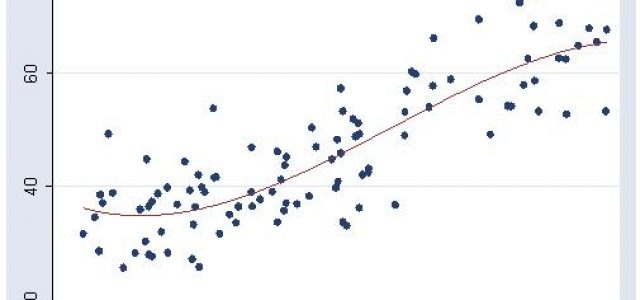My son just bought a car. He plugged his smart phone into it and his apps appeared on the screen just above the gear shift, it looks a bit like an iPad embedded in the dashboard. With an extremely simple UI it tells him all he needs to know about his car and gives him anything he wants with a couple touches of the screen. He also talks to his car.
Joseph: “Get directions”
Joseph’s car: “Where would you like to go?”
Joseph: “101 Walnut Street, Warwick, Rhode Island”
Joseph’s car: “I’m getting you directions to 101 Walnut Street, Warwick, Rhode Island”
And within 2 seconds he has an interactive map on his screen and he says, “Start”. And his car tells him and shows him how to get there. If he needs to send someone a text he just speaks it into the air and his car sends the text off. If he has a question, he googles it on his phone or asks his car. If he wants to buy some sneakers he buys them on his phone. If he wants to find a Chinese restaurant, his car will tell him the closest ones but also give him reviews, menus, and directions. He Snapchats, Tweets, and knows when the Red Sox won because his phone notifies him. He bought and sold his college text books on line, and when he bought his car he had six local dealerships competing for his business with continual texts and got a GREAT deal from the lowest local bidder.
My son is twenty five years old. He’s a digital native. His grumpy old father (me) is a digital immigrant. People like us marvel at such things, but digital natives just expect them. Look, I’m not an old man. I’ve been working in the IT industry for thirty years so technology is not a mystery to me. But I’ve seen it evolve….I remember when PCs, VCRs, DVD players, cell phones, the internet, and Cable TV were new things. I remember floppy discs, mainframes, and fax machines. I remember early spreadsheets like Lotus 123, and 20/20 on VAX computers. So as each new thing comes along I adjust a little, but I’m also wowed by them, because I remember a time before any of these things and could operate just fine in a world without them if I had to. My son, on the other hand, doesn’t and might struggle.
My point is that it has never been so easy to find exactly what you want instantly and the folks flooding into the workplace have a very different expectation of how to find what they need to do their job because their life experience tells them how easy it should be. Interrupting their workflow to open an application which requires them to drill through layers of data and look at it from this perspective and that in order to find an answer to a simple question, and then return to the original application and try to somehow insert this new info into what they are doing will seem unwieldy at best, and ridiculous at worst. They have no need for bubble graphs or pie charts. There is no interest in building a Venn Diagram or dropping in a regression line. They simply want to know how many customers bought product A and product C in January of last year in New Jersey, and they don’t expect to have to work for it. Heck, by this time next year they’ll probably expect to be able to ask the question into the air and have the answer drop into their application!
Let me be clear. I’m not downing them for this. In fact it’s amazing that their lives have been so enriched by technology that this seems ho-hum to them. And they are incredibly efficient workers as a result. A year ago I saw a demo of a technology which was showing a new way to interact with your dashboard. There was a presenter on stage wearing a bracelet which sensed his every movement, and with subtle hand, wrist and body gestures he was able to interact with several panes on a giant dashboard without ever touching a keyboard. While entertaining to see, it was completely impractical. I suspect many applications will be like my son’s car someday soon, and we will speak to them rather than type on a keyboard, or make silly hand gestures. But until we’re all sitting around talking to our tablets, we better start making BI as simple and automatic as we can.
So what does that mean? It means we will need to embed BI and analytics into applications such that they become a natural part of the workflow and run behind the scenes supporting the users’ needs. We need to stop giving them tools and start giving them answers, guidance, direction, insights instead. Helping them work smarter within their current workflow by anticipating their need instead of interrupting it to go roll around in tons of data to find the answer to a simple question. Here I need to ask forgiveness from all those folks I’ve worked with for years who enabled the evolution from production reporting to ad-hoc reporting, to interactive cubes, to dashboards and scorecards, to data discovery….these were all very necessary steps along the way. They all led us here, and who knows what this will be a stepping stone to. But it’s time to provide that new stone.
The best way to do this is to involve these sharp new folks in the process. Pay attention to them when they say things like, “Why don’t we just…”, or “Can’t we get…”, or “Why do we always have to…”. They will give you insights into how to support their workflows, what information is typically needed at various points, and you will know what needs to happen in order to get it ready behind the scenes.
Thankfully, the technology to enable this next new wave of embedded analytics is already available and waiting for you to embrace it. It comes from OpenText, and I’d be happy to introduce you to it and help you begin to use it to drive analytics to a new impact high in your company. You can reach me here.
You can also learn more about Embedded Analytics here
Article by channel:
Everything you need to know about Digital Transformation
The best articles, news and events direct to your inbox
Read more articles tagged: Analytics







